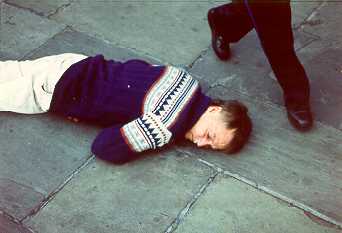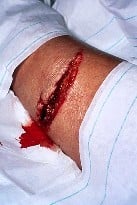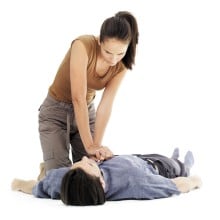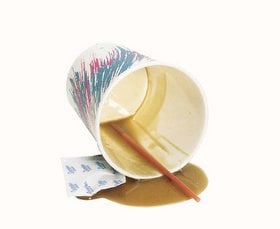First Aid, CPR And AED Review Quiz!
(446).jpg)
Here's a fun and awesome 'First Aid, CPR, and AED Review Quiz' that we've created for you. It’s an underrated skill to be able to save a life in an emergency. Most people are content with leaving the medical practice to the professionals, but there’s never any harm in improving your own ability to help in a pinch, especially if time is a factor. In this quiz, we aim to test your knowledge of general First Aid, CPR, and AED practices to see if you have what it takes to save a life.
- 1.
You find an unconscious adult that does not respond to a gentle shake and shout, what must you do next?
- A.
Stop and wait for emergency medical services to arrive.
- B.
Call or direct someone to call 911.
- C.
Check for breathing and give two breaths if they are not breathing.
- D.
Attach the AED.
- E.
None of the above.
Correct Answer
B. Call or direct someone to call 911.Explanation
If you find an unconscious adult who does not respond to a gentle shake and shout, the next step is to call or direct someone to call 911. This is important because it initiates the process of getting professional medical help to the scene as quickly as possible. Calling 911 ensures that trained emergency medical services can be dispatched to provide the necessary assistance and potentially save the person's life.Rate this question:
-
- 2.
Signs of low blood sugar can appear quickly and may include?
- A.
A change in behavior, such as confusion or irritability.
- B.
Sleepiness or even not responding.
- C.
Hunger, thirst, or weakness.
- D.
Sweating, pale skin color and/or seizure.
- E.
All of the above.
Correct Answer
E. All of the above.Explanation
The signs of low blood sugar can manifest in various ways, including changes in behavior such as confusion or irritability, sleepiness or unresponsiveness, feelings of hunger, thirst, or weakness, as well as physical symptoms like sweating, pale skin color, and seizures. Therefore, all of the above options are correct in describing the signs of low blood sugar.Rate this question:
-
- 3.
The first step to respond to someone with low blood sugar is to?
- A.
Have the person sit quietly or lie down.
- B.
Bleed them to help prevent blood clots.
- C.
Give the person something containing sugar to eat or drink.
- D.
Give the patient aspirin.
Correct Answer
C. Give the person something containing sugar to eat or drink.Explanation
The correct answer is to give the person something containing sugar to eat or drink. When someone has low blood sugar, also known as hypoglycemia, it is important to provide them with a source of sugar to quickly raise their blood sugar levels. This can be in the form of fruit juice, regular soda, candy, or glucose tablets. Sitting quietly or lying down may be necessary if the person is feeling lightheaded or weak, but the immediate priority is to address the low blood sugar by providing sugar. Bleeding the person or giving them aspirin are not appropriate actions for low blood sugar.Rate this question:
-
- 4.
You may only use an epinephrine on a patient if ______ approves the use of the medicine.
Correct Answer
911Explanation
In emergency situations, when a patient is in need of epinephrine, the use of this medicine should only be approved by 911. This is because 911 is the emergency hotline that connects individuals to trained professionals who can assess the situation and provide guidance on the appropriate use of medication.Rate this question:
- 5.
To clean a dirty open wound, you should use?
- A.
Water.
- B.
Alcohol.
- C.
Hydrogen peroxide.
- D.
Antiseptic wipes.
- E.
None of the above.
Correct Answer
A. Water.Explanation
Water is the correct answer because it is the safest and most effective option for cleaning a dirty open wound. Water helps to remove dirt, debris, and bacteria from the wound without causing further damage or irritation. Alcohol and hydrogen peroxide can be too harsh and may delay the healing process by damaging healthy tissue. Antiseptic wipes may contain chemicals that can irritate the wound. Therefore, using water is recommended as it is gentle and readily available for wound cleaning.Rate this question:
-
- 6.
While performing chest compressions during CPR, you hear a cracking sound like the sound of ribs breaking, what should you do?
- A.
Stop and wait for emergency services to arrive.
- B.
Continue performing CPR.
- C.
Continue performing CPR but press softer.
- D.
Continue performing CPR but press harder.
Correct Answer
B. Continue performing CPR.Explanation
If you hear a cracking sound like the sound of ribs breaking while performing chest compressions during CPR, you should continue performing CPR. The cracking sound is often caused by the breaking of ribs, which can happen due to the force applied during chest compressions. While it may be alarming, it is important to continue CPR as it is crucial for maintaining blood circulation and increasing the chances of survival for the person in cardiac arrest.Rate this question:
-
- 7.
Your respond to a patient that has spilled hot coffee on their hand. The skin on the top of the had is red and the person complains of pain. What should you do?
- A.
Apply burn cream to the effect skin and wrap with sterile dressing.
- B.
Put a bag of ice or cold compress on the burn air until the swelling and pain reduces.
- C.
Hold the hand under cold running water from a faucet for several minutes.
- D.
Pour ice cold water over the burn area.
- E.
None of the above.
Correct Answer
C. Hold the hand under cold running water from a faucet for several minutes.Explanation
When a person spills hot coffee on their hand, the first step is to cool the burn. Holding the hand under cold running water from a faucet for several minutes helps to lower the temperature of the burn and prevent further damage. This action also helps to reduce pain and swelling. Applying burn cream and wrapping with sterile dressing may be done after cooling the burn, but the immediate priority is to cool the burn with cold water. Using a bag of ice or cold compress may not provide consistent cooling as compared to running water. Pouring ice-cold water over the burn area may cause further damage to the skin.Rate this question:
-
- 8.
We use ________ pads for dressing burn wounds.
Correct Answer
nonadherent
bloodstoppers
blood compress
non adherent
non-adherentExplanation
The correct answer is "non-adherent." Non-adherent pads are used for dressing burn wounds because they do not stick to the wound, allowing for easy removal without causing further damage or pain. Bloodstoppers and blood compress are not specifically designed for dressing burn wounds, and "non adherent" is a misspelling of the correct term "non-adherent."Rate this question:
- 9.
What must wear before providing first-aid to anyone in the workplace.
- A.
Protective gloves.
- B.
CPR barrier.
- C.
Clean clothes.
- D.
A first-aid certification card.
Correct Answer
A. Protective gloves.Explanation
When providing first-aid to anyone in the workplace, it is important to wear protective gloves. This is because gloves act as a barrier between the first aider and the injured person, reducing the risk of cross-contamination and the transmission of any potential pathogens or bodily fluids. Wearing gloves helps to protect both the first aider and the injured person from potential infections or diseases that could be present. It is a safety precaution that ensures the well-being of both parties involved in the first-aid process.Rate this question:
-
- 10.
While at work you must provide first-aid if someone needs help?
- A.
True
- B.
False
Correct Answer
B. FalseExplanation
Providing first-aid at work is not a requirement for all employees. It depends on the nature of the job and the level of training an individual has received. While it is encouraged for workplaces to have trained first-aiders, it is not mandatory for every employee to provide first-aid. Therefore, the statement is false.Rate this question:
-
Quiz Review Timeline +
Our quizzes are rigorously reviewed, monitored and continuously updated by our expert board to maintain accuracy, relevance, and timeliness.
-
Current Version
-
May 24, 2023Quiz Edited by
ProProfs Editorial Team -
Aug 07, 2009Quiz Created by
Zackcrowther
 Back to top
Back to top







